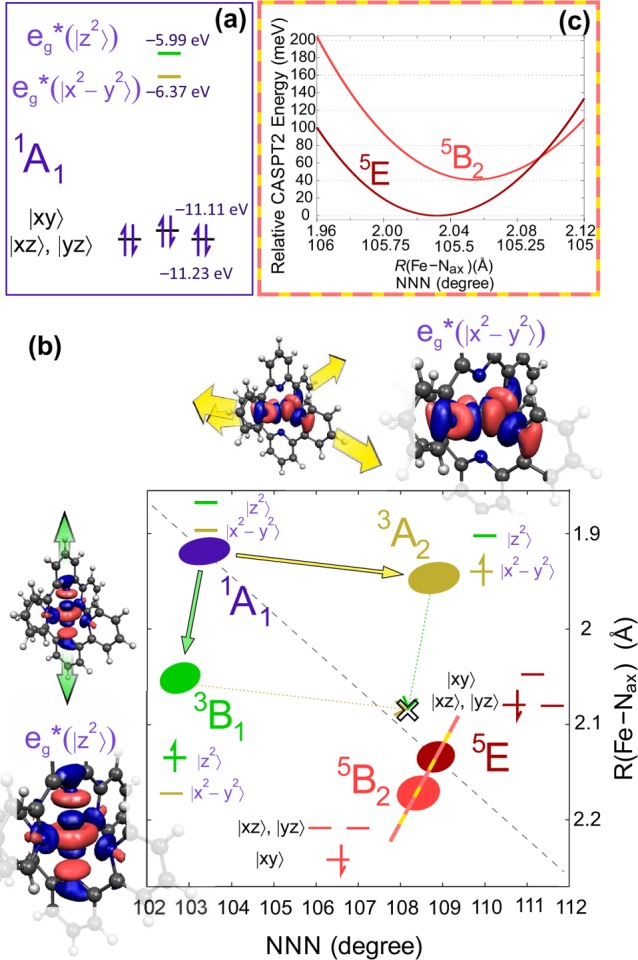Figure 9.

(a) Simplified molecular-orbital diagram for the singlet ground state of [Fe(terpy)2]2+. (b) Schematic representation of the minima for the lowest singlet, lowest two triplet, and quintet states of their potential energy surfaces, along with the filling pattern of their unevenly filled t2g or eg* spin orbitals, which are most relevant to their description. On the side, surface plots present the graphical representation of the two eg antibonding orbitals of the 1A1 together with the structural changes when these antibonding orbitals are populated. The different directions of the expansions and the constraints on the ligand geometry suggest an explanation for the origin of the two modes. A hollow cross indicates the position reached in this configuration space when the coordinate changes at populating the eg*-type orbitals are added to approximate the transition to the quintet state. (c) CASPT2 potential curves of the two possible HS (5E and 5B2) states of [Fe(terpy)2]2+ along the line connecting their minima, extracted from the potential energy surface of ref (12). Their spin-up eg orbitals are both populated, and their electronic structure differs only in which of the three t2g-like nonbonding orbitals are filled with a spin-down electron.
